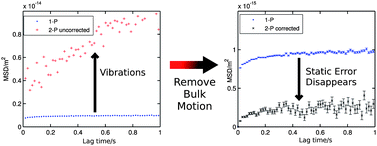Lengthscale dependence of critical exponents determined by vibration-corrected two-particle microrheology†
Abstract
The

* Corresponding authors
a
Sector of Biological and Soft Systems, Department of Physics, University of Cambridge, Cambridge, UK
E-mail:
amc66@cam.ac.uk
Fax: +44 (0)1223 337000
Tel: +44 (0)1223 337007
The

 Please wait while we load your content...
Something went wrong. Try again?
Please wait while we load your content...
Something went wrong. Try again?
A. M. Corrigan and A. M. Donald, Soft Matter, 2010, 6, 4105 DOI: 10.1039/C0SM00117A
To request permission to reproduce material from this article, please go to the Copyright Clearance Center request page.
If you are an author contributing to an RSC publication, you do not need to request permission provided correct acknowledgement is given.
If you are the author of this article, you do not need to request permission to reproduce figures and diagrams provided correct acknowledgement is given. If you want to reproduce the whole article in a third-party publication (excluding your thesis/dissertation for which permission is not required) please go to the Copyright Clearance Center request page.
Read more about how to correctly acknowledge RSC content.
 Fetching data from CrossRef.
Fetching data from CrossRef.
This may take some time to load.
Loading related content
